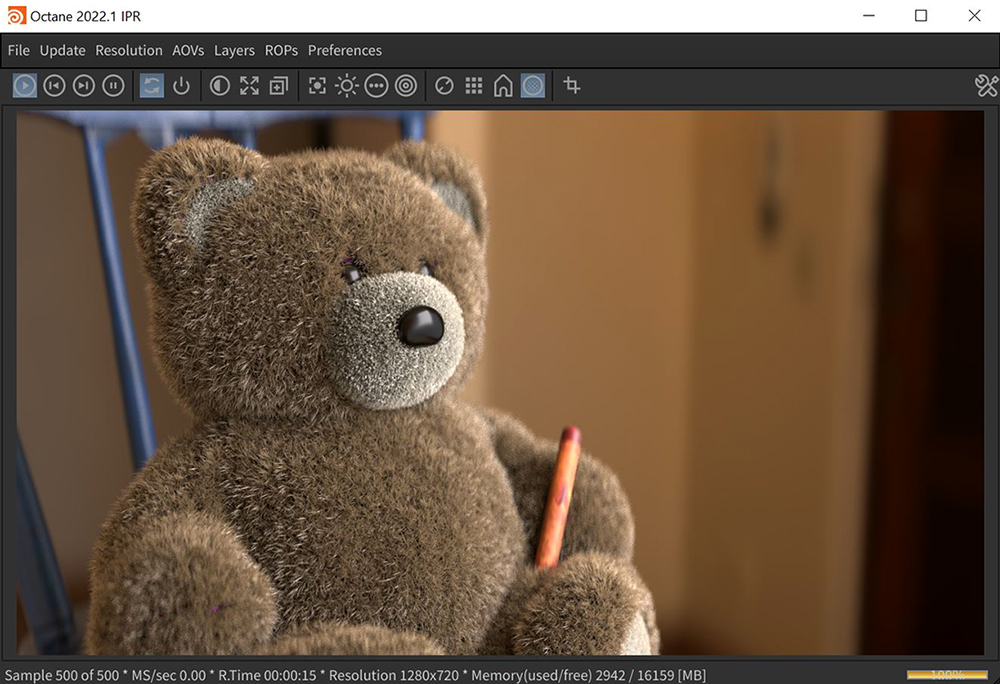
A new hair material has been implemented since OctaneRender® 2020 series that improves hair rendering realism. The difference between hair material and traditional diffuse/specular materials is that hair material assumes the geometry it's assigned to is strictly a hair spline, allowing pre-integration for multi-scattering effects that occur in hair geometry. The hair material has its unique set of parameters, allowing different coloring modes for hair, and also multiple roughness parameters for different scattering behavior along a hair strand (figure 1). More details on hair and fur rendering with Octane can be found in the Effect Overview section under Hair and Fur.

Figure 1: The Octane-specific hair material
Albedo - Albedo is used only in albedo+specular mode, and defines the base color of the hair strand directly (all characteristics that are not defined through specularity).
SpecularAmount of specular reflection, or the mirror-like reflection of light photons at the same angle. Used for transparent materials such as glass and water. - Specular is used only in albedo+specular mode, and defines the specular reflection color.
Melanin - The pigmentation component that gives the hair strand its primiary color. Higher values produce a higher concentration of melanin, making the hair strands darker.
Pheomelanin - The redness (pheomelanin content) of the hair strand as a fraction of all melanin. A value of 1.0 makes the hair more red. The pheomelanin amount will have no effect if the melanin is set to 0.
Mode - Determines whether to use the Albedo or the Melanin+Pheomelanin parameters to determine the hair color.
Index of Refraction - Hair index of refraction. The typical value for human hair is 1.55. The higher the value, the more reflective the hair strands.
Longitudinal Roughness - Longitudinal roughness defines the roughness along a strand of hair. The higher the value, the more scattering along the strand and the rougher the strand of hair will look. On the other hand, the lower the value, the shinier a strand of hair will look.
Azimuthal Roughness - Azimuthal roughness defines the roughness for the cross section of a hair strand at the intersection, the higher the value, the more multiple scattered light exits the hair strand, and overall hair volume lightens.
Offset - Offset adds a series of small scales of angles along the cylindrical hair strand, so it appears less uniform.
Randomness frequency - Random frequency specifies a value from 0 to 1 to control the frequency of randomness applied to the hair color.
Randomness offset - Random offset specifies a 2-dimensional value from 0 to 1 to shift the randomness applied to the hair color.
Randomness intensity - Random intensity specifies the intensity of the random albedo being applied over the base color.
Random albedo - Random albedo is limited to the albedo + specular mode, it allows a random color to be applied over the base albedo of the hair model.
Opacity - Controls the transparency of the hair. A value of 0.0 is transparent, while 1.0 is fully opaque.
Emission Input - Accepts either a Blackbody emission or a Texture emission. This parameter makes the material emit light and creates Mesh emitters. These mapping types are covered in more detail under the Texture Overview category, and in Mesh EmittersThe ability for a surface to emit illumination usually described by a Black Body or Texture emission type. under the Lighting Overview category.
Custom AOV - Writes a mask to the specified custom AOV.
Custom AOV Channel - Determines whether the custom AOV is written to a specific color channel (R, G, or B) or to all the color channels.